Month: September 2023
Hannah
Button Project

I chose to make a few different politically and socially engaged buttons for this project as part of a larger exploration of text-based work and political work that my renewed participation in human rights movements has largely triggered.

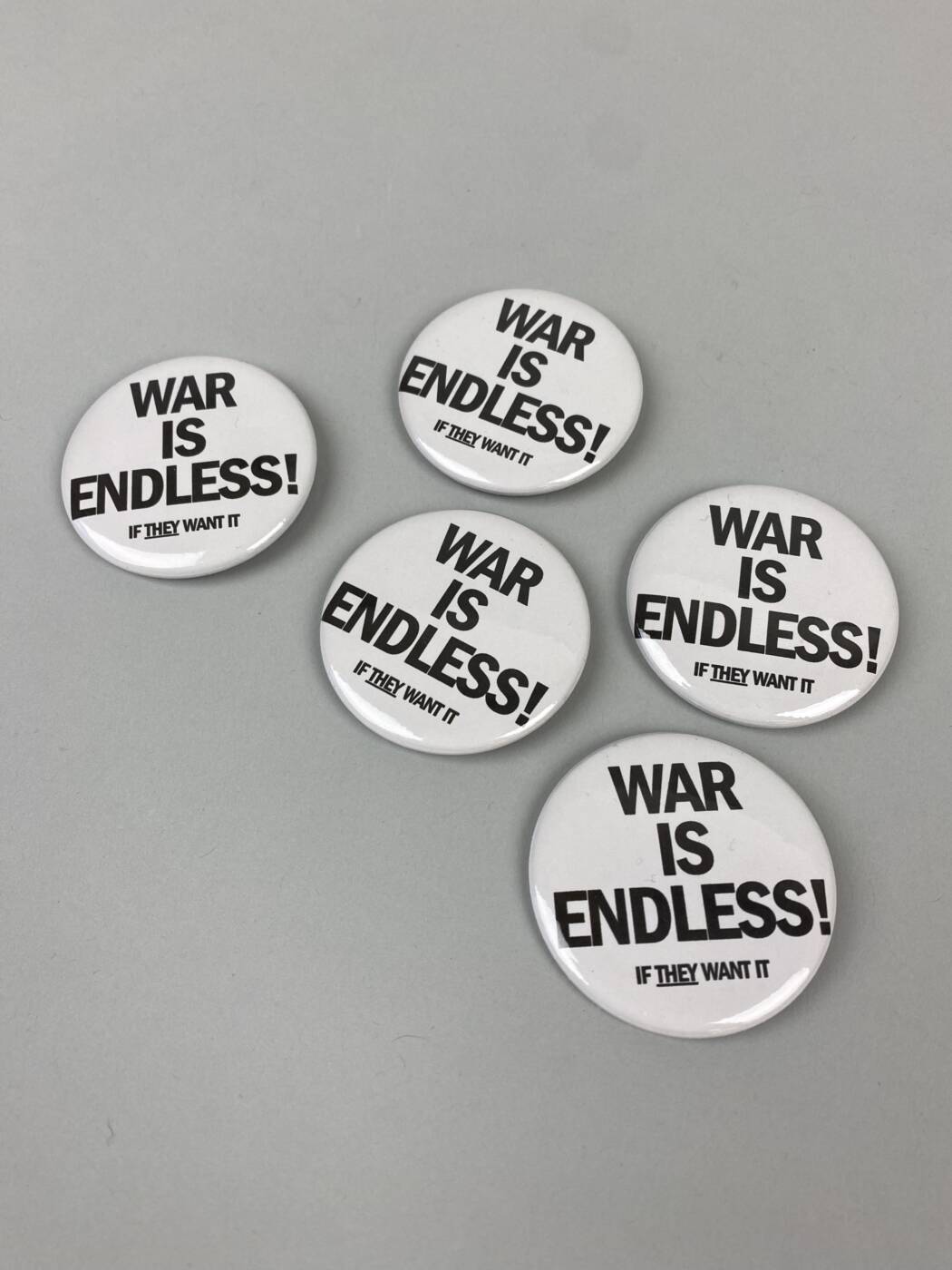
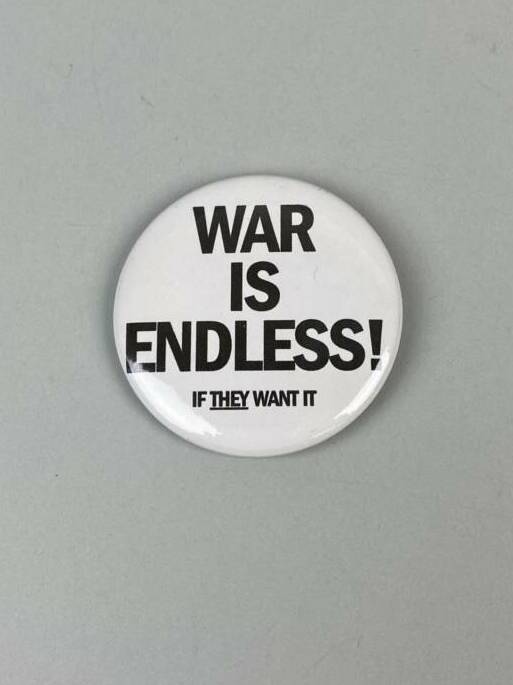
My first button is modeled after Yoko Ono and John Lennon’s “War is Over” poster. It appropriates their font and their message but turns it on its head to expose the realities of the war movement. Wars are fought by workers and innocents to financially and politically benefit the elite. I see it as a call to action for the people. Without revolution and a destabilization of the current system, war is endless, because the elite want it to be. War is not popular, yet it does not end.
This button provokes viewers and wearers to ask “Who wants war?” It provokes discussion of power and resistance to war and violence. It also questions the ability of political art like Ono and Lennon’s to provoke change. The original poster is over 50 years old, yet wars, genocides, and violent injustice prevail around the globe. How can we truly end the violence?
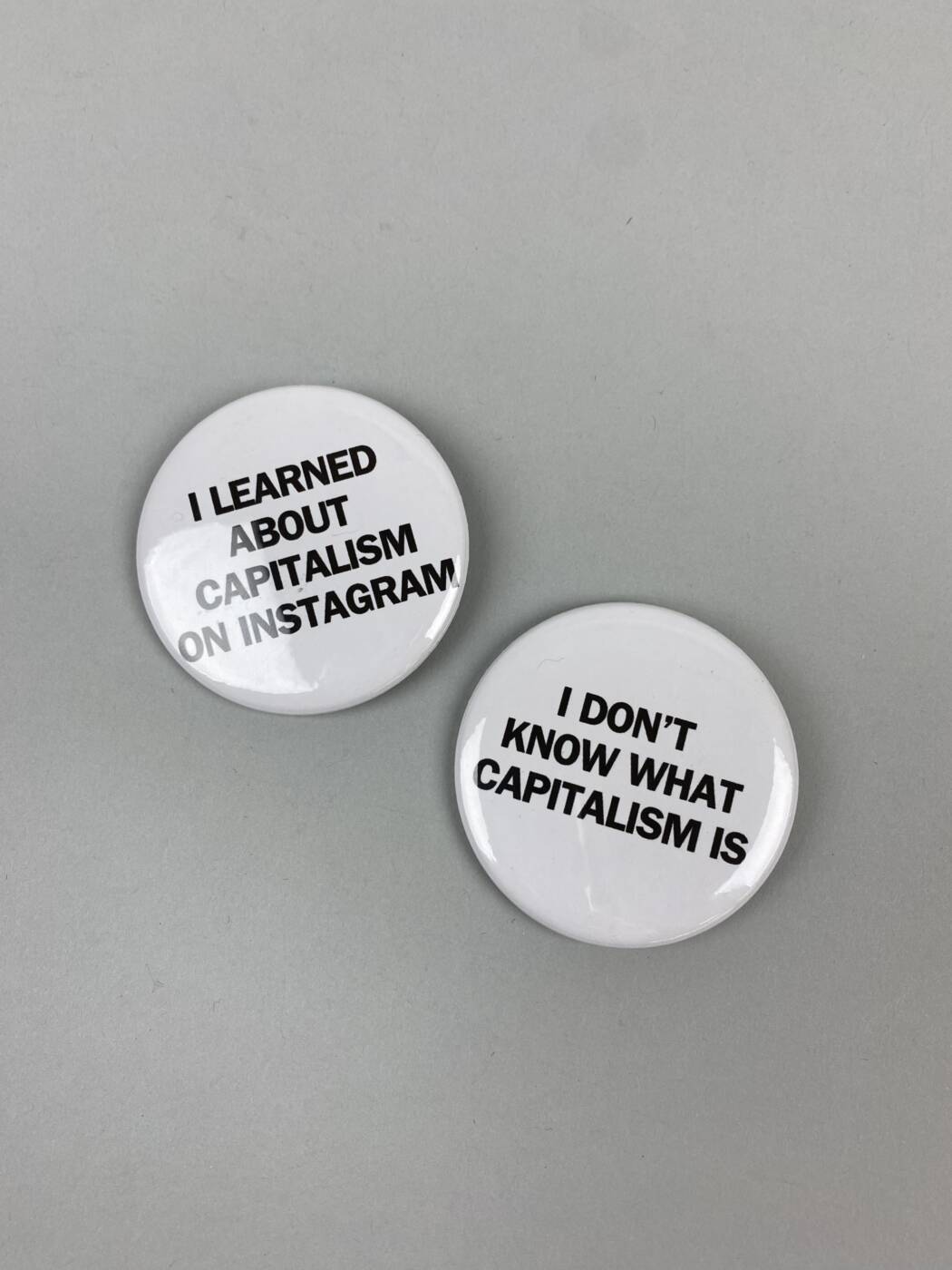
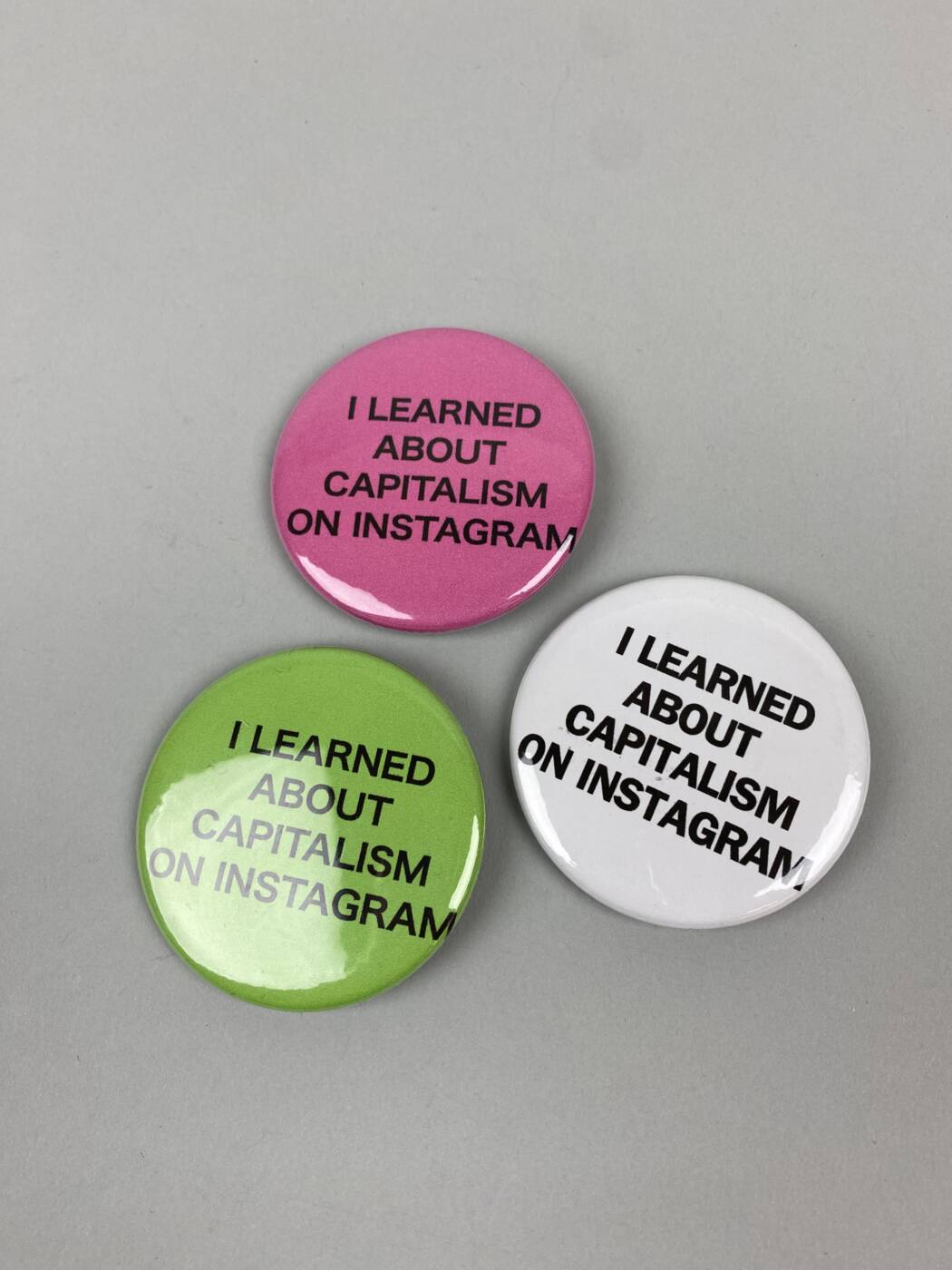
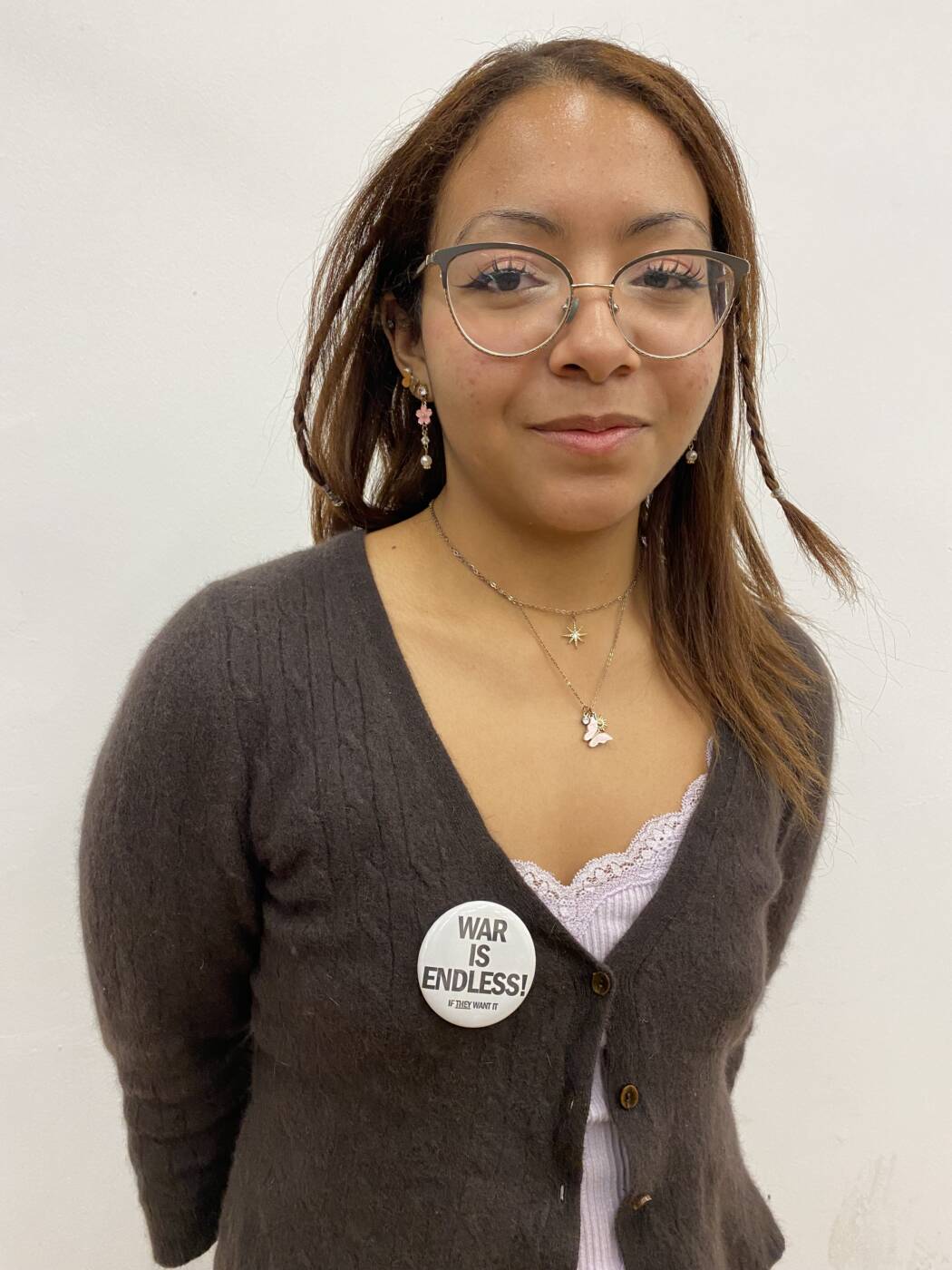
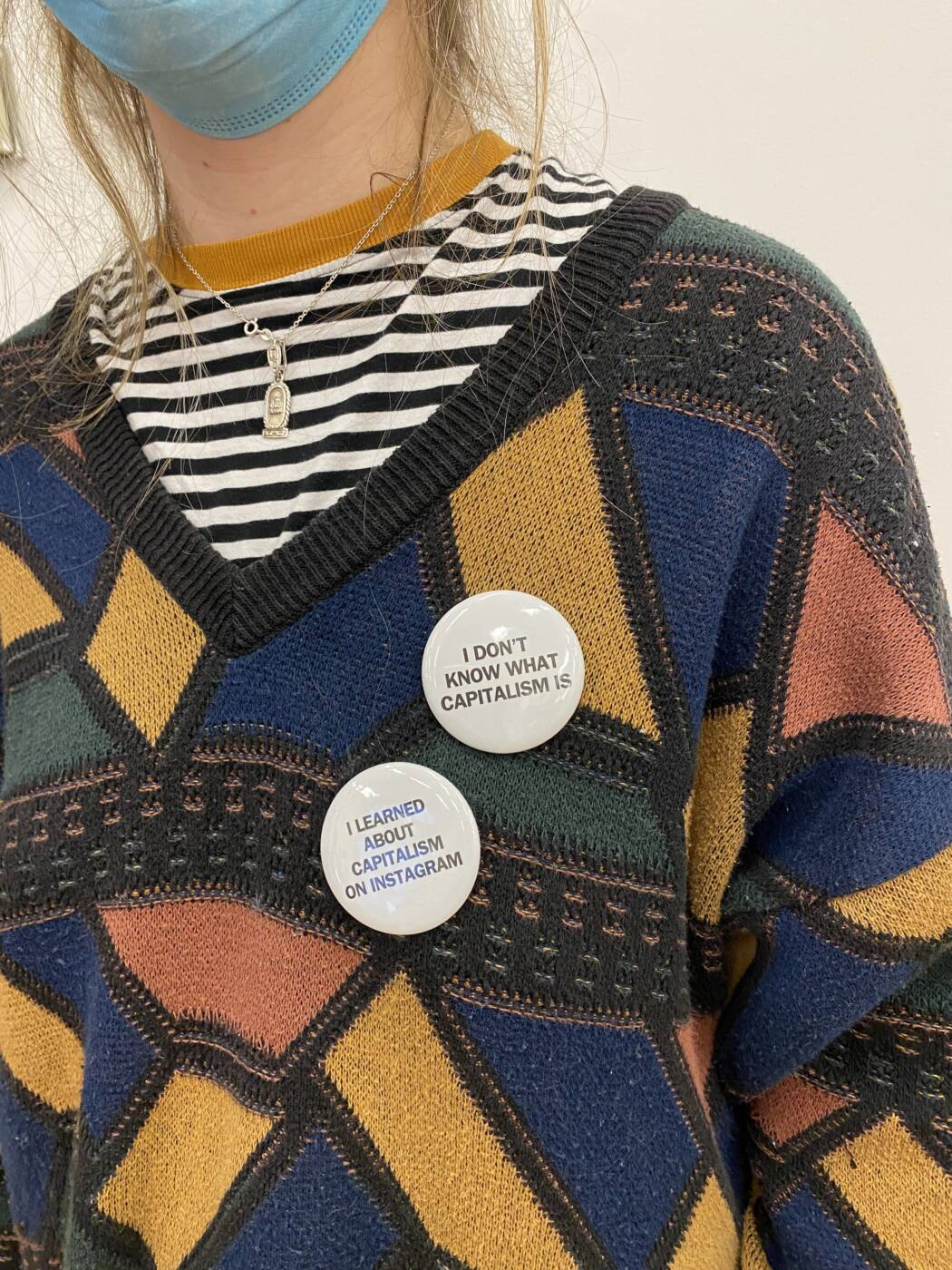
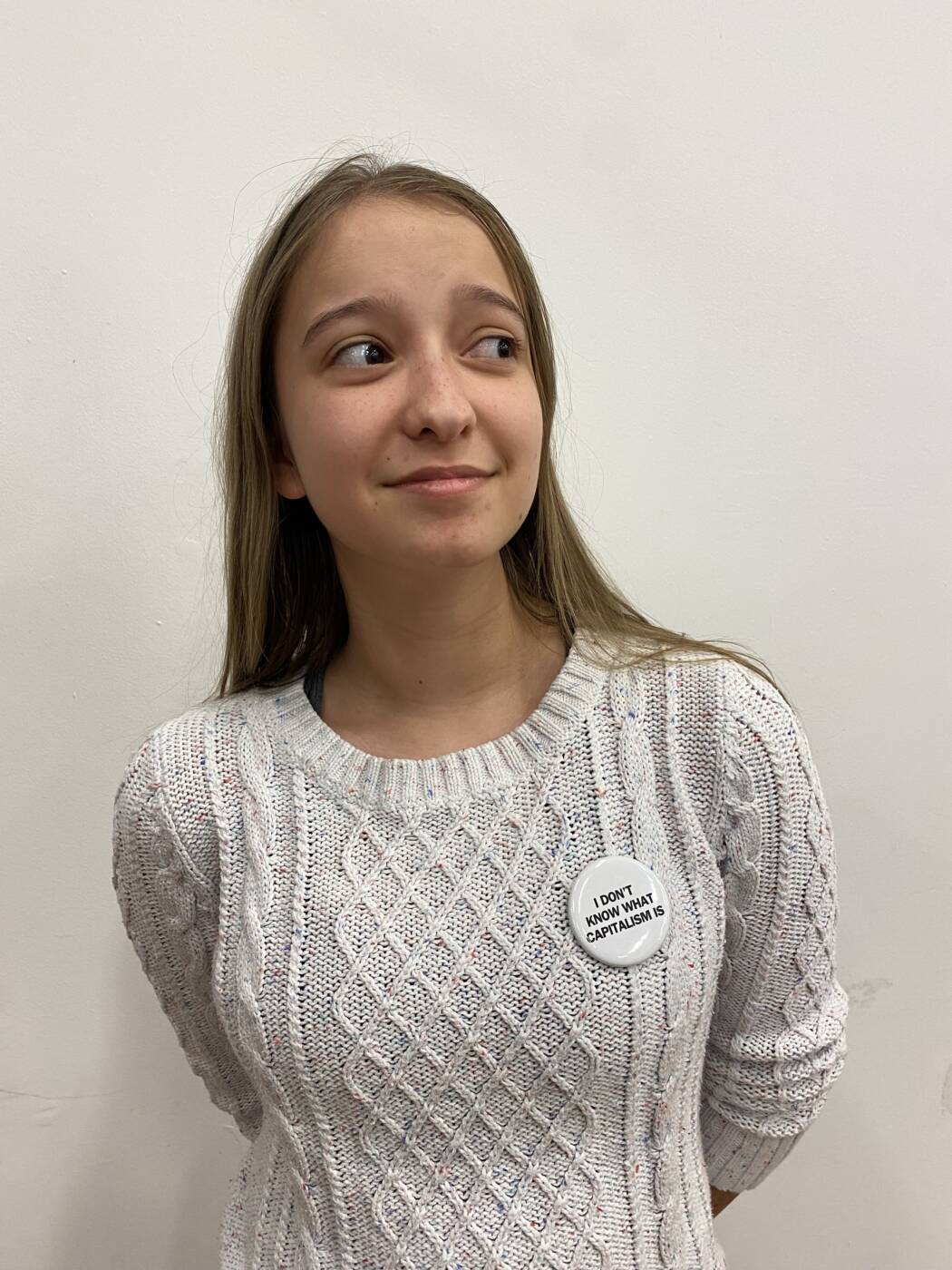
My second series expands on my last project where I made a tshirt that said “I don’t know what capitalism is.” I reused that phrase and added another: “I learned about capitalism on Instagram.”
Both phrases are pulled from personal experiences. A professor told me they didn’t think I knew what capitalism really was. That same professor warned me about falling into the stereotype of the “dumb woman who does all her research on instagram.” Both these statements made me feel small and they dismissed so much about me as an anti-capitalist artist. I took the opportunity to reclaim the phrases and wear them proudly. They become interactive, provocative statements that hold many meanings for many people.
I, like many activists have had to rely on instagram and other social media as a starting point from which I can seek out other sources. When much of mainstream news favours, for example, Israel in the genocide it is committing in Palestine, social media becomes a key factor for sharing knowledge and first-hand accounts. For me, learning about capitalism on Instagram is not a point of shame but rather of pride in the young people who labour endlessly to educate others and create a growing movement of solidarity with oppressed peoples worldwide.
Conceptual Portrait: I DON’T KNOW WHAT CAPITALISM IS.
I DON’T KNOW WHAT CAPITALISM IS. printed t-shirt, 2023.
I chose to work with text for this project. I had been looking at Jenny Holzer’s Truisms as well as referring back to previous works I’ve made surrounding text. The text-based work I enjoy the most is politically and socially active. My previous text works have looked at capitalist systems and government critique. I’ve included those works at the end of this section to help contextualize this new work in my wider practice.
I DON’T KNOW WHAT CAPITALISM IS pulls from a personal experience. I was told by a professor that they did not think I knew what capitalism was. As an anti-capitalist artist and student, I felt belittled. I wanted to subvert this phrase that was said to me and wear it proudly on my chest. “I don’t know what capitalism is” is a phrase that invites questioning, explanation, and thoughtfulness around the economic system we all live in in so-called Canada. It invites the viewer to ask themself: “Do I know what capitalism is?” “Does this person wearing this shirt need me to explain what capitalism is?” “Can I explain what capitalism is?”
I am also interested in the inherent performance of wearing such a statement on my chest. What does it mean to walk around in the grocery store wearing this? What about the dollar store? Or a public park? Or even a forest?
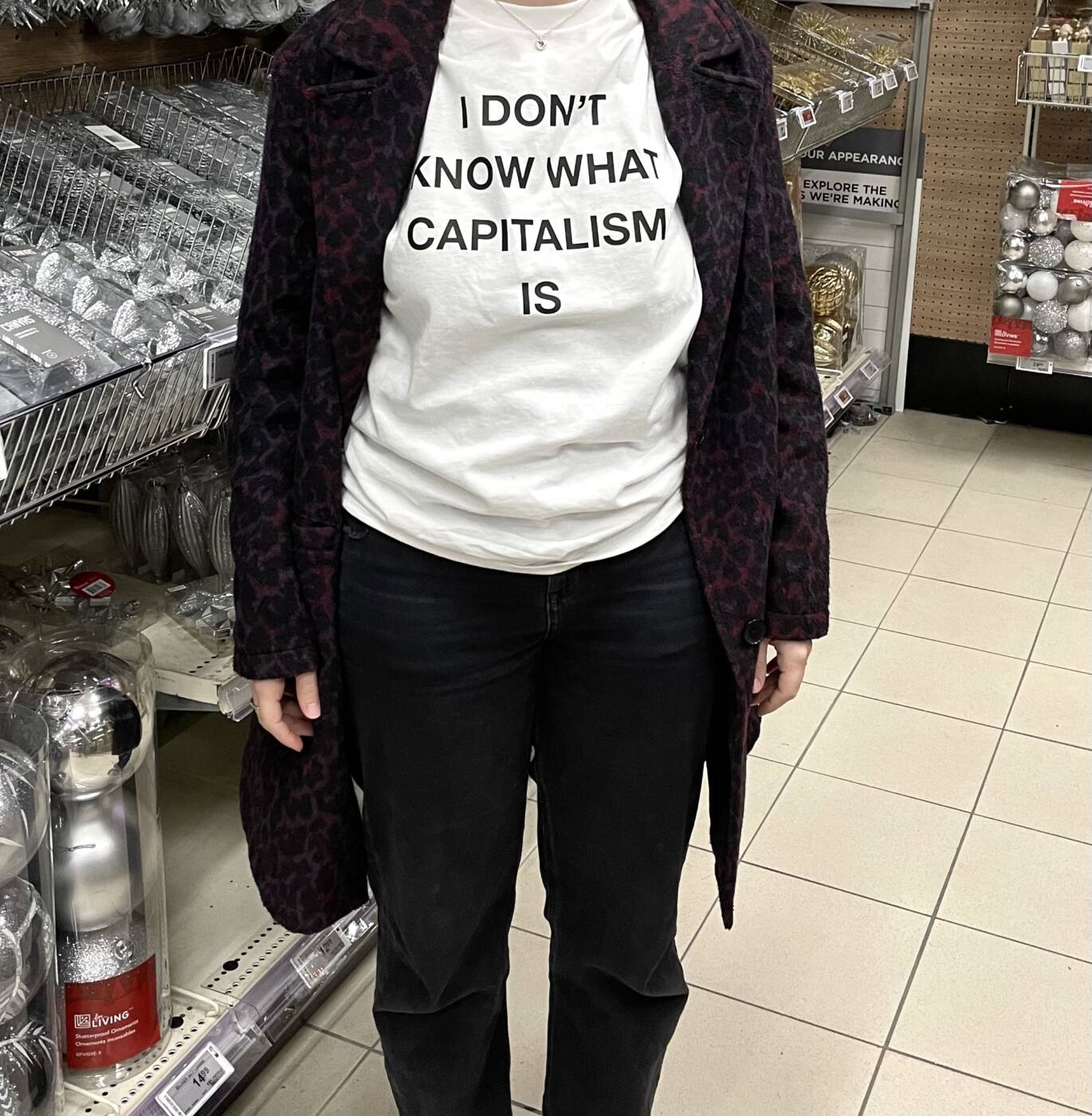
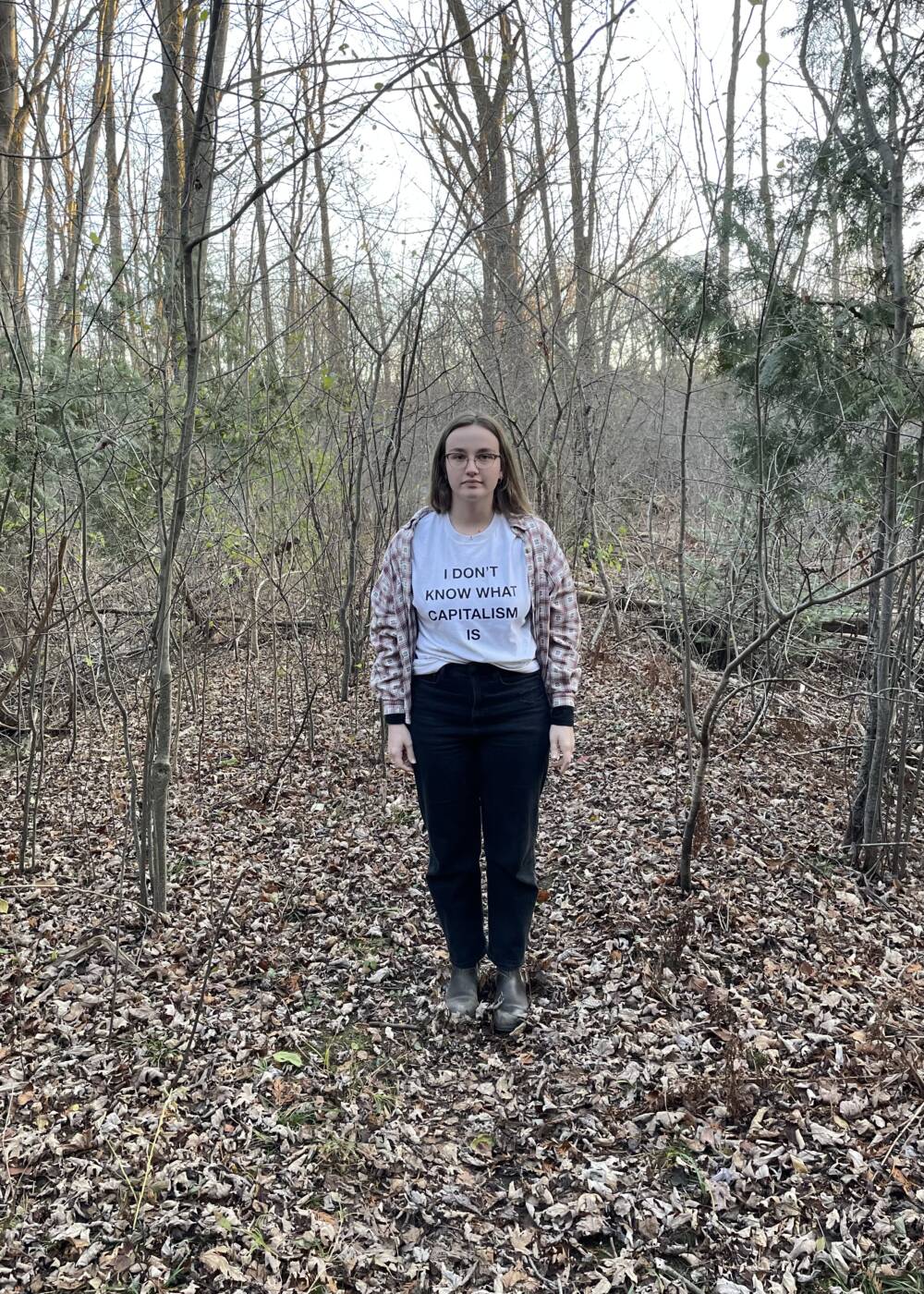
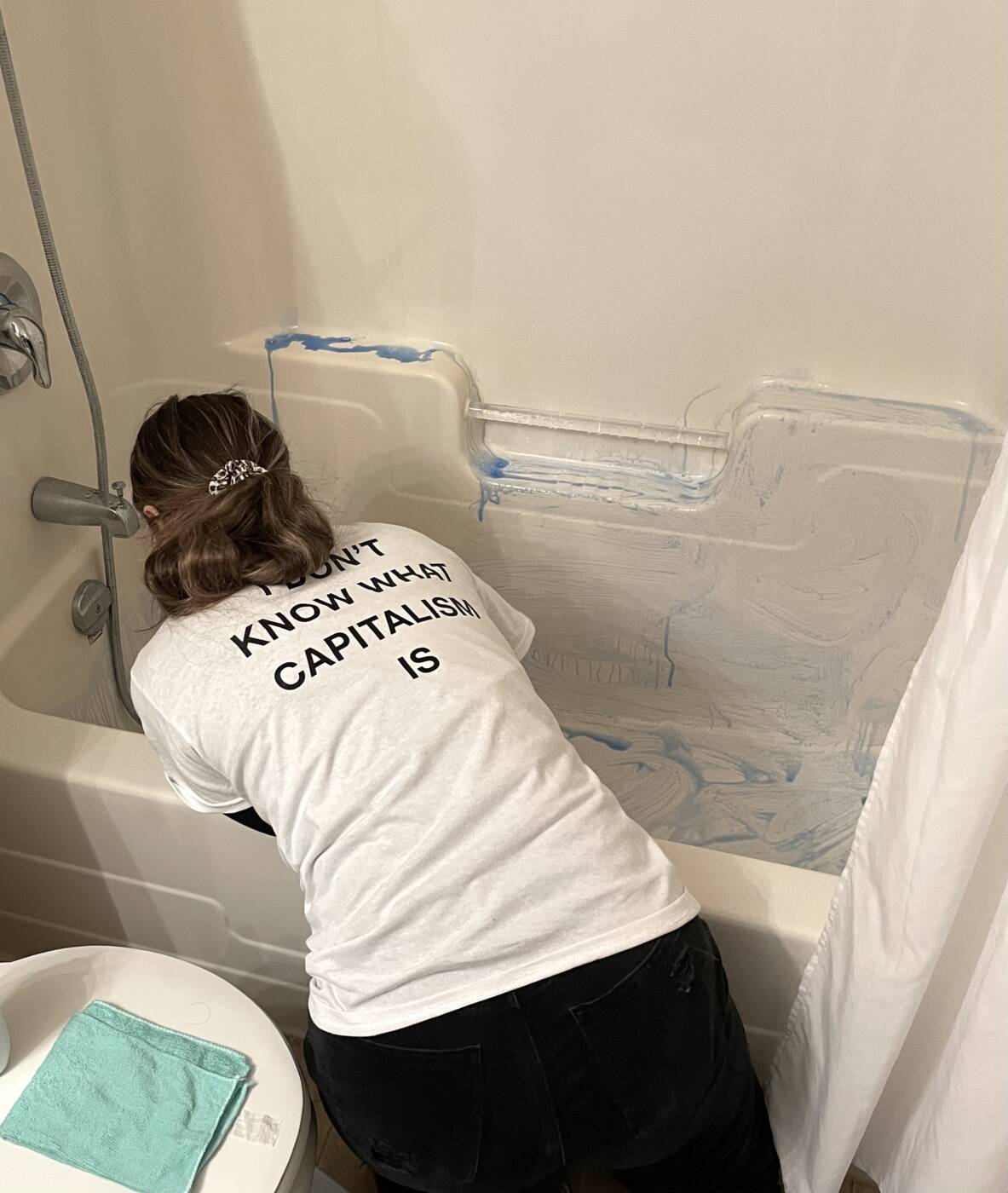
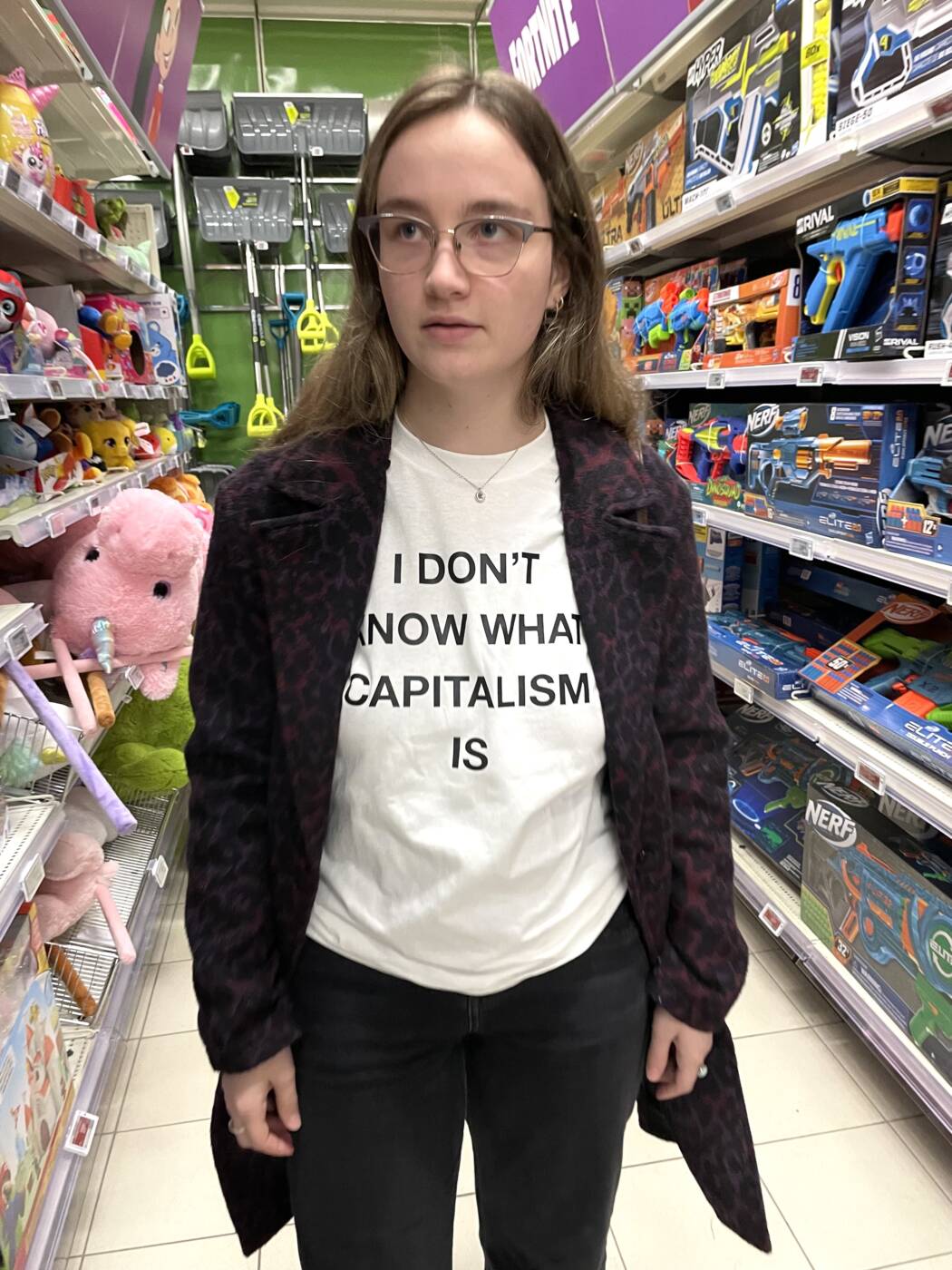
I wore my shirt for a full day of errands, chores, and even a leisurely hike.
This could be characterized as a performance or an experiment. In the future, I’d like to reperform my day in the t-shirt as it was pretty cold and I had difficulty boldly wearing the statement on my chest. The results of my wearing the shirt were not immediate, I did not notice anyone looking at me or questioning the words on my chest. If I had had the guts to wear the shirt more boldly and visibly, I think the results would have been different. However, I am quite shy by nature and had difficulty pushing myself on this particular day.
I am pleased with the photos I captured, especially the one of me scrubbing my bathtub. I think this photo in particular pushes this work into a feminist framework. It comments on the value of domestic labour in a capitalist system. I think having documentation of the shirt on a body really helps push the work into different concepts and meanings. I am excited to continue to pursue this type of text-based work beyond this class.
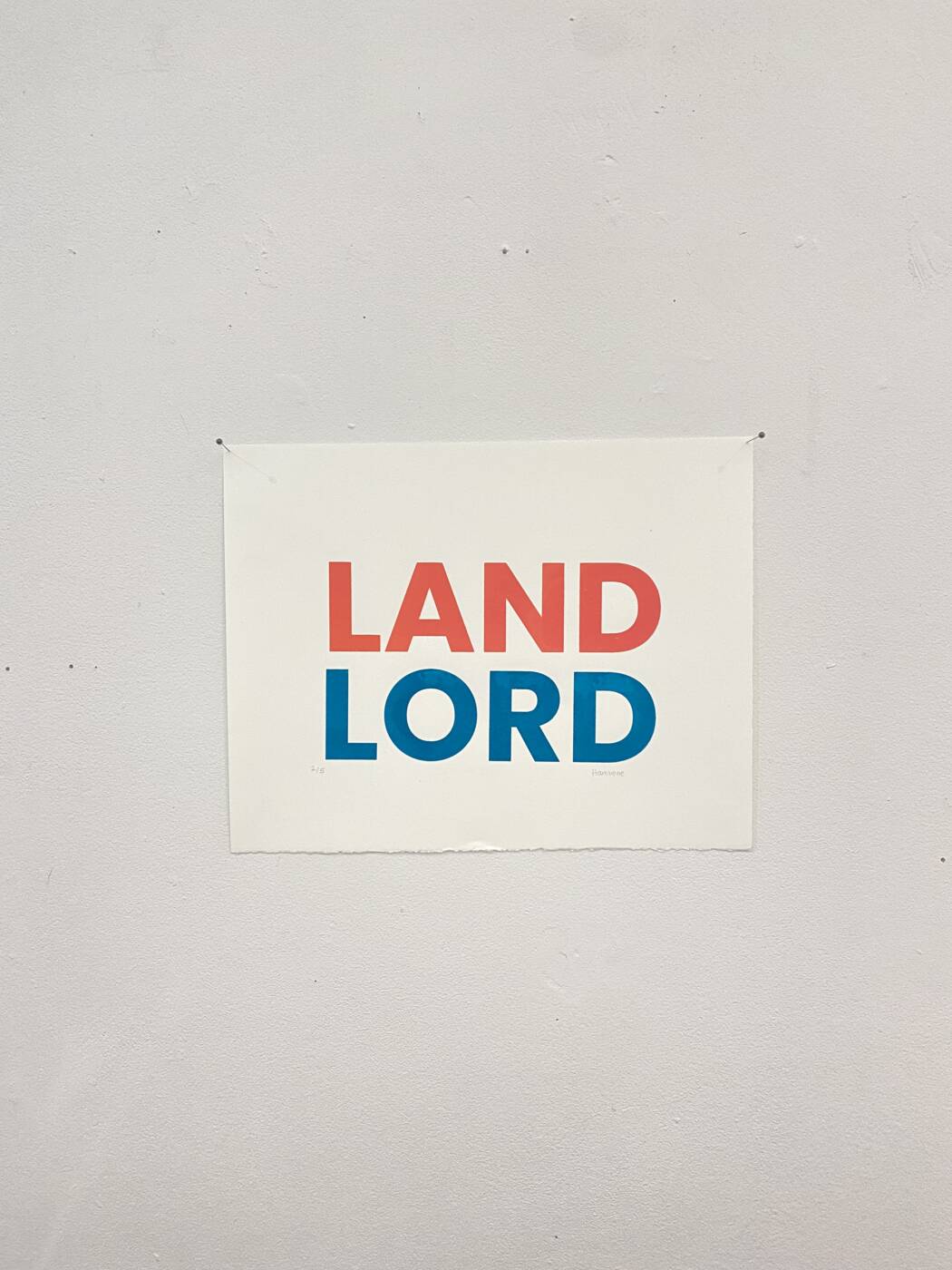
LAND LORD, silkscreen, 2022.

The United States Government is a Terrorist Organization (triptych), document frames, paper, ink, plastic, lace, toys. 2023
Audio Project
Women Love Being Cheated On
This work takes clips from a popular white, anti-feminist creator named Pearl Davis. Davis has made a platform for herself on many forms of social media. She is a strong anti-feminist who has even advocated for divorce to be banned and for women to lose the right to vote.
Today’s hyper-individualist society is rife with far-right wing politics that dismiss oppressed people in all forms. North American society is a breeding ground for hateful, misinformed rhetoric and ideology. Pearl’s evangelist, white supremacist ideology about feminism and women in general is a dangerous example of the kinds of thoughts individuals have. I chose Pearl because of her refusal to talk about race, disability and class in her discussions on feminism. This work creates a portrait of the type of disillusioned white woman who feels her livelihood, and womanhood is threatened by the intersectional feminism that seeks to include all genders, races, abilities, and classes.
Video Art
For this work, I chose to focus on hair as the subject. I take special care with my hair. I have been growing it for many years and will continue to do so for many more years. Each night I brush and braid my hair before I get into bed.
I am a queer, femme person in a straight-presenting relationship. My partner is a cisgender man and I often think about my queer identity in the relationship. I am his girlfriend, but am I really a girl? My hair ties me to my feminine identity, but I often feel like my hair is less indicative of my gender and more representative of a routine of care I do for myself.
I used this video assignment to explore this haircare routine, which I often do as I get ready for bed with my partner. I want this work to make connections between gender and hair, sexuality and hair, and emphasize my gender identity in relation to the cisgender man I share my life with.
- One shot “Brushing Sam’s Hair with Care”
2. Loop “Endless Care”
3. Sequence “Braiding Together”
Pipilotti Rist
- Post an image from one of Rist’s videos that you are most interested in. Summarize the action of the video. Who is performing, and how? Describe the images – including framing, colours, and movement. How did she shoot and edit the video? Describe the sound and how it interacts/enhances/competes with the images. How is it installed in a gallery – in terms of projection/scale/presentation in a context of other things? How does the work strike you?
From Rist’s early work to now, installation has been of utmost importance to the meaning and experience of the work. I encountered Rist’s Selfless in a Bath of Lava early in my undergraduate degree and have often thought about that tiny screen and its ability to be walked over and completely ignored (intentionally or not).
The tiny screen (only the size of a matchbox according to Randy Kennedy for New York Times) is installed in the floorboards of a space. It shows Rist herself, nude, reaching up so as to not be engulfed in the ‘bath of lava’ beneath her. Below is an image of this work as it is typically installed. The floorboards are chipped away irregularly, and the screen is set below the surface of the floor.
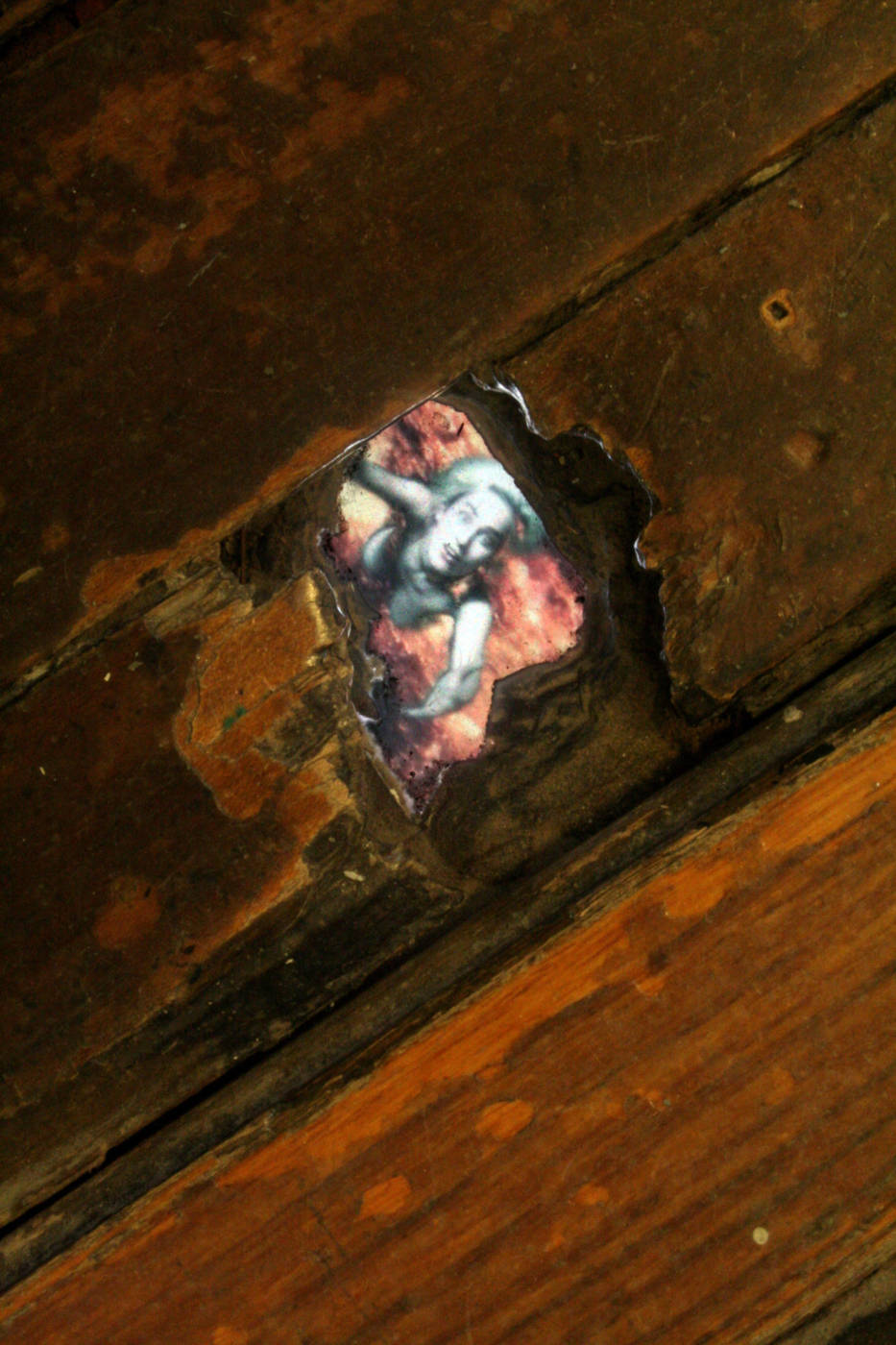
As mentioned, Rist is performing. She is naked, reaching up and pleading for help. She says “Help me” in various languages as well as “I am a worm and you are a flower. You would have done everything better!”. The video is shot from above, just as the viewer is intended to be above Rist upon installation. The angle, coupled with her nudity and self-degrading comments reflect vulnerability. It is difficult to ignore the feminist undertones of this work, her position beneath the floor can be understood as a critique of patriarchal society where women are perceived as the lesser gender, positioned below men in the social hierarchy.
Her movement and speech is almost childlike, again reinforcing feminist ideas in which women and children are often placed in the same category of weakness, helplessness and vulnerability. The bright, saturated colours on the screen can also evoke childhood and playfulness; despite nudity and the impending violent death in a bath of lava.
The audio is quiet, the viewer must crouch down and get close to hear the tiny voice coming from the floorboards. Scale and audio work together to make sure that the viewing of the work is intentional and that those looking around the gallery absentmindedly will miss it.
2. Rist has had a long career in video art making – how do you relate it to the kinds of video that you might see all the time on Tik Tok or You Tube, in our time? Reflect on her performances and also – on her ideas (particularly about women’s bodies, and sexuality, exposure, behaving strangely or subversively…) and how they play out from examples in her works.
To begin answering this prompt, I thought I would speak about the direct relationships I could draw between contemporary media and Pipilotti Rist’s work. During class, we viewed “Ever is Overall” in which Rist’s friend walks down a city street with a metal replica of a “Red Hot Poker” (a flower) and uses it to smash car windows. She looked gleeful as she trotted down the street in her dress. Similarly, on Beyonce’s 2016 album Lemonade, the song Hold Up’s music video shows Beyonce herself walking down a city street gleefully, using a baseball bat to smash car windows. Watching Rist’s film immediately evoked Beyonce’s music video, which was iconic and exciting at the time of release. I had never realised that this video appropriated Rist’s performance.
Ever is Overall inspired Hold Up, and Hold Up has inspired other reproductions in film, television and on social media. My favourite reproduction being from the Netflix original show Unbreakable Kimmy Schmidt.
It is endlessly interesting how the art world infiltrates popular culture and how each new interpretation of the work reaches further from the original. We go from Pipilotti Rist’s video, which repackages female rage as beautiful, gleeful and ultimately ‘feminine’. Beyonce’s interpretations takes on a new meaning as she adds her song about being a victim of infidelity. Her position as a Black woman also transforms Rist’s rage to give it new meaning. Beyonce looks gleeful, like the performer in Rist’s video, however Beyonce’s video confronts the ‘angry Black woman’ stereotype instead of just general female rage. Then, the concept is flipped on its head again as a Black gay man performs it in Unbreakable Kimmy Schmidt. It becomes more comedic than conceptual, and begins to lose its roots in Rist’s work.
Rist’s work can also connect to more accessible and widespread forms of video media. TikTok is probably the largest short video platform in the western world. It sets a precedent for how videos are consumed, with most social media sites having introduced some short video feature in the last five years. Feminist artists working with video such as Pipilotti Rist set the stage for so-called amateur video-makers on TikTok to engage in their own commentary about body image, womanhood, female sexuality, self-surveillance and other feminist ideas.
In the last year or so, a trend emerged called “corecore” in which creators make compilations of a variety of videos to evoke a feeling of discomfort. A very common theme of these videos is womanhood, some explore female rage, which I think connects to themes of Rist’s work. Corecore videos showcase an aspect of womanhood, sometimes being misogyny experienced, sexual abuse, harassment and patriarchy. These videos are, in my opinion, contemporary video art, outside of the institution of the gallery or museum. I’ve linked a couple below.
3. Experiment: While still at school – put on your sweater/shirt INSIDE OUT. How does this change how you feel? Is it changing how others are treating you? If you can wear your sweater/shirt inside out all day – make a few notes about the results of this very small change in your presentation in public. Is this a performance? Why?
For me, wearing my shirt inside out posed more personal problems than issues wondering what people might think of me. I knew few people would notice my clothes, especially on the packed bus I took to school. When I walked through Branion Plaza I knew some people would notice, as there are typically students eating lunch and people-watching, I often sit and watch people. I was not super bothered by them, especially since it was my t-shirt that was inside out and I had put an open button down on top to keep me warm. So my irregular clothing was not fully visible. My biggest issue was that I was physically aware that my shirt felt wrong. It irritated me and the print on my shirt touched my bare skin. I had to fix my shirt during a break in my class, I could not take it anymore.
In terms of this being a performance, I am still not sure. I was certainly performing for myself since I seemed to be the only one to notice the way my clothes were being worn. But as far as engaging a viewer, I don’t think I was successful, nobody seemed to care to watch me. But a performance can be just for me, and maybe this was a performance only I engaged in.
My Kilometre
Background:
I have a hard time walking far distances. From the many buses that come to my stop, I always choose to take the 99 Mainline because it drops me off closest to my classes. When my partner (who loves to hike) plans walks for us together, he knows he has to keep my bodily limits in mind. Uneven ground makes my weak ankles sore, long distances begin to hurt my legs, toes and back. I am adjusting to this everyday pain that has become more of a problem in the last year. At only 22, I am fearful of how my current pain might progress in the future. Nonetheless I like to be outside. I like to move my body and I like to walk.
Process:
I walked from around 8:20 pm-8:30 pm in a relatively open space in the university’s Arboretum. I walked mostly on grass. My partner followed my path with my phone in his hand. He used the app “AllTrails” to map my exact route. I walked until I felt like I had walked a kilometre, but I had no way of knowing whether I had walked more or less than the 1000 metres usually prescribed in a kilometre.
I took an unconventional path. I chose an open space rather than a pre-existing trail for safety due to the low light conditions. I also chose an open space because I knew I did not want to walk in a straight line or along a path. I wanted to make my own path based on my own decisions and intuition. My route zig-zagged, looped back on itself and had sharp turns: all of these things stopped me from being able to measure physical distance travelled and forced me to rely on my body and how it felt.
What Happened?
I walked just over 600 metres at dusk. I stopped because I felt like I had walked a kilometre. My body was giving me signs that I had travelled some distance. I began to have some shooting pain in my right foot. So I stopped and asked my partner to show me my progress. That night, 600 metres was my kilometre.
How is this exactly a kilometre?
This is MY kilometre, based on my body’s limits on that evening. It is not a kilometre in terms of the metric system, rather it is a kilometre based on feeling and body.
I figure that I have many different kilometres. There was a sense of disorientation as dusk turned into darkness. I had no visual sense of how far I had travelled, only perceived time and bodily feeling. Perhaps in the daytime my kilometre would measure 1300 metres.
This experiment, done at night, forced me to rely less on vision and more on feeling to distinguish my kilometre.
Marina Abramovic: The Artist is Present
Question 1
My first impressions of Marina Abramovic based on the documentary are mixed. I have been somewhat familiar with her work based on my studies in contemporary art history throughout my undergraduate degree. I have always found her compelling but was shocked to find that some of her work made me deeply uncomfortable. The main work, The Artist is Present made me emotional. There were tears forming in my eyes.

The aspect of The Artist is Present that struck me the most was the shift in vulnerability in the artist herself. 2 weeks before the opening at the MoMA, Abramovic was ill, and the film showed her clad completely in red, even eating red oranges. She said that red is a colour of strength, and she felt she needed all of the strength she could get in preparation for her retrospective. She had fallen ill just weeks before a 3 month long performance, after all.
What is especially interesting is that this red aura of strength followed her into the first two months of her performance. All day, for six days of the week, for two months, Abramovic sat unmoving in her red gown, which covered her from neck to wrist to ankle. She sat opposite her audience, separated by a table. She was protected by her strength in red and by the structure of the table in front of her.

The month of May, the final month of the exhibition, saw a shift in the performance. Abramovic began wearing white. She removed the table that protected her. She stripped herself of her strength and sat, truly vulnerable to the audience in front of her. It is admirable to watch her shift her performance. It became more emotionally heavy as these shifts occurred. The film showed more emotionality in both the audience and the performer after this shift took place.

I was not struck the same way by another work in the show, titled Luminosity, originally performed for 2 hours by Abramovic in 1997. It was reperformed by young artists for the retrospective at the MoMA. It is an uncomfortable piece for me, that is not to say that it isn’t a good piece of work. I am just made more uncomfortable by nudity than some. The nudity coupled with the pornographic position of the woman makes it hard for me to watch. The woman stands, largely unsupported on two small platforms. Her other source of support is a microphone shaped object pressed against her vagina. It looks torturous as she slowly moves her arms up and down. The female body will always be viewed under the male gaze, especially when nude. It is impossible to escape. I think that is where my discomfort ultimately comes from. In Luminosity, Abramovic unfortunately provides a vessel for the male gaze, and perhaps that is the point.
The work is still effective despite its implication of patriarchal male gaze. In its reperformances during her retrospective, Abramovic’s work took on new meanings based on the bodies performing. A Black woman taking on the role had a vastly different significance to Abramovic’s own white body. Women of colour being placed in the performance evoked themes of white supremacy, unpaid labour and slavery, bondage and freedom.
Question 2
Abramovic’s work shows performance art as a lifestyle and a lifelong kind of work. It looks at human relationships and humanity itself. It challenges the body and the mind equally and pushes the boundaries of the gallery and the world at large. Marina Abramovic is a highly dedicated performer who refuses to quit. I remember learning about her performance in which she burned a five point star while laying in the middle, and she passed out from lack of oxygen. Luckily an audience member noticed her lose consciousness and disrupted the performance. I remember my professor saying this disruption was somewhat unwelcome to Abramovic. She sought to push her body to its absolute limits.
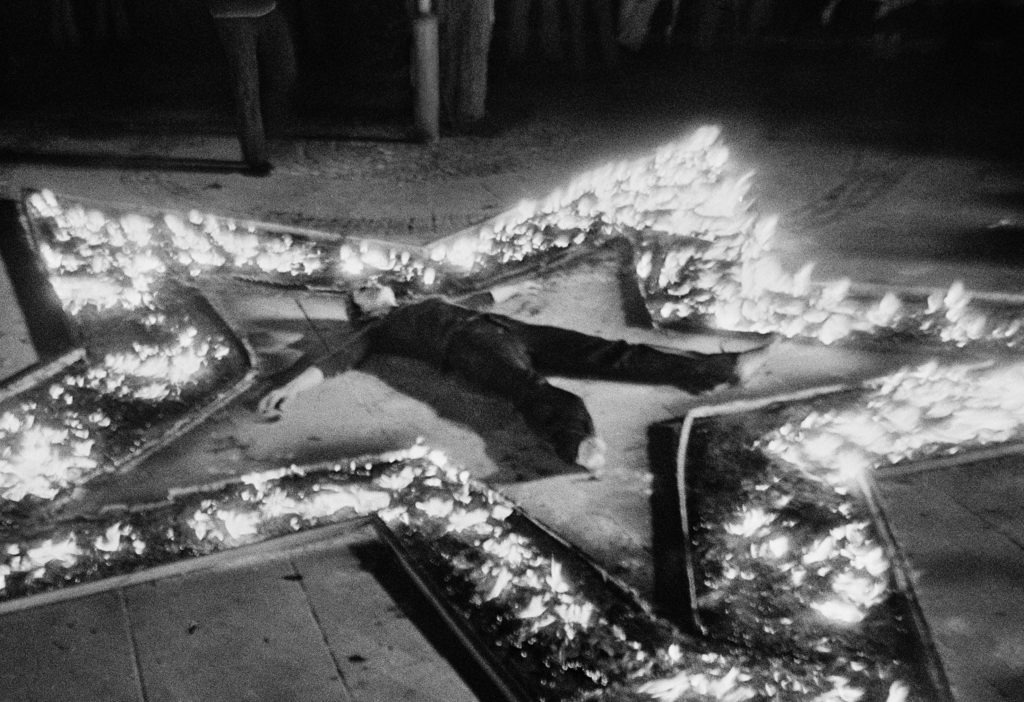
In the documentary, those close to her assert that Abramovic is never not performing. She says that “performance is a state of mind”. Performance art uses the body as medium to explore some sort of relationship. Her work with Ulay explored the dynamic between man and woman. Her solo work challenged her physicality while building a strong bond-like relationship with audience members (especially in The Artist is Present).
Her performance is real, it is intense and it captivates viewers. She is never acting. Her performance becomes her life. Her intense discipline, rooted in her childhood in former Yugoslavia, benefits her craft as she is able to sustain long, exhausting performances. She is often thought of as the grandmother of performance art. She paved the way for many other artists. One aspiring performance artist is shown in the documentary. She walks up to Abramovic in The Artist is Present and disrobes. She is immediately removed by security. However, it could be argued that she was only following in Abramovic’s footsteps in breaking the status quo in the institutions of the art world.
Question 3
The institutions that control the artworld exist not only as cultural pillars of society. They also operate in the context of colonialism and capitalism. The roots of most major museums in North America and Europe are within stolen land, stolen objects, and stolen labour. The art world, when Abramovic joined it, would have been highly centred around white men and the physical objects they produce. Her work, along with the work of other early performance artists responded to the physicality and the permanence of the art world. It rejected the idea of making art to be bought and sold as commodity, and embraced ephemerality.
Her performances are not always available to watch in full anywhere. Some works exist only in those who made up the audience. Many exist only in photographs. These works reject commodification and they reject the traditional gallery/museum space. The documentary asserts that during her early career, and her time with Ulay, she was very poor. There was not a whole lot of art collectors able to buy her work, because it was not for sale. As her career grew, gallerists and curators grabbed ahold of her rising star and began coming up with ways to make money in a way that honoured the ephemerality of her work. Abramovic sold limited series of stills from her performances at over $2,000 a piece. Her work began to participate in the colonial capitalist art world. It had been commodified.
An artist has to make a living. It’s impossible to disengage completely from the art world to make critique about it. Marina Abramovic, however, became a superstar. She has clearly become very wealthy based on the scene in the documentary where she has a personal shopping experience with the creative director of Givenchy in which she considers purchasing an $8,000 jacket. This scene undermined a lot of her institutional critique for me. It feels as though she has shifted from disrupting the system of the art world to participating in it in a lot of ways. Though, much of her integrity remains as she continues to make performance art that is laborious and difficult. She still shifts the power of art and includes the audience wholeheartedly, though she does it in expensive clothing now.
Trinity
Button Project
For our final project I wanted to do a collection of “Certifications” that never really get certified. I at first wanted to just do tasks that seem common and are staples of everyone’s everydays, but as I came up with ideas I realised that a lot of them were chores and that led me to realising a lot of them are tasks seen as “traditionally female”. I of course do not believe that any of these things are women only but that led me to make the project very woman centric. They are certifications of titles that may be given in a more demeaning or look-down kind of way, but they are meant to be worn with pride because why shouldn’t you be proud of completing any of these? Many are more basic chores like vacuuming and cooking but they also range to names like catfish (someone who pretends to be someone else, women often get called this for wearing any form of makeup) or crier (because women are seen to be emotional). Some of them make fun of the name calling but they are all meant to be worn with pride. They don’t all spawn from name calling, for example, ‘nurturer’ is one of my favourites because it is a trait I believe you should be very proud of in any context. I wanted the designs of the pins to be very uniform but I did not want them to be too formal. I opted for making them colourful with cute doodles to make them all fit together but also have them be a fun and happy accessory. You are encouraged to wear them when completing any of the tasks to let everyone know you are more than certified and proud of it! I really enjoyed brainstorming and creating for this project and now I have certification pins to make my everyday tasks more fun!







Conceptual Portrait
GPT
For the Conceptual Portrait I wanted to highlight one of my bestfriends as the subject of my portrait. This friend has a name that often gets mispronounced, whether it is supply teachers who have never seen the name before or people who cannot wrap their head around the pronunciation. As we have been friends for many years I have been a witness to this and seen how prepared she is to have to correct others, and I think that this has become a part of her identity as a whole. Because of this I thought that her name would be a good base for painting her portrait. I wanted to continue working with audio art so I decided to create a compilation of many different people pronouncing her name, some who have heard it, most who are seeing it for the first time. There is a wide range of pronunciations with many commonalities but all just different versions of Garggie. Some people I asked were so scared to even try to say it and I didn’t realise the pressure that came with just attempting to say a name even when I assured them it was somewhat meant to be wrong. I think it created a beautiful portrait of attempts that create a mismatched puzzle and leaves you wondering, what is the correct way to pronounce Garggie Pathak Talukdar?
Audio Art
An Orchestra of an Awful Artist
(All of the instruments and layers in this composition are recordings of me. I recorded in 5 layers: Right-Hand Piano, Left-Hand Piano, Violin Melody, Trumpet Melody, and Trumpet Background. I paced the beginning so that I could match the audios, then the rest is my best attempt to remain with the tempo on each instrument.)
I wanted to create An Orchestra of an Awful Artist to show a version of myself today that was created by choices that I made in the past. All three instruments in this piece, piano, trumpet, and violin, were instruments that I was trained in in some capacity but I have not played in 6+ years. On top of that, the instruments I was using were old and not in the best condition so my violin only had 3 strings and could not be tuned and the trumpet was stuck with the middle valve down. This piece was in no way expected to sound good, I genuinely did try my best on each instrument, but without proper training it is very difficult to make these instruments sound good especially when they are not in perfect working order. For this performance I chose the song “Rush E” which is an incredibly fast song that just increases in speed as the song goes on. It is a song that even if I trained on all three instruments up until now, I may have still not been able to play it properly (better but not well). I went in without practising beforehand, except for an attempt on getting notes, down because I wanted it to be as true to my abilities as possible. Like I said, this piece shows one version of me today. I could have stuck with one, two, or all three of these instruments and this composition would have sounded much better today, but I didn’t. I love music and part of me is sometimes sad that I did not stick with them, but I also acknowledge there were other things in my life that I felt were more important to pursue and I am glad I listened to my heart. Another reason I chose this for my project is because I am a perfectionist and there was no possible way I could make this perfect. Perfection was not a goal but it was still difficult to use clips with such glaring mistakes or that sounded so terrible. This however was the truest form of my current ability and although not nicest on the ears, I think there is beauty in the truth of my current abilities. I named this piece An Orchestra of an Awful Artist not because I feel I am awful, but because it is okay to be awful at things. I tried and I sucked, but I had fun Sometimes doing things for enjoyment rather than perfection can be so rewarding and I definitely felt that here. It was fun to relive the challenges of playing these instruments, and maybe I’ll invest time in trying to learn them again, or maybe not, and I’m perfectly okay with that.
One Feat, Three Ways – Video Art
Creating these videos was a really interesting and enjoyable challenge. I worked with Kathryn Zhang and Tuesday Troup and together we created a series of videos surrounding the task of “bags”. One of the things I found most interesting as our ideas went from planning to final was how the meaning and impact evolved. We focused a lot on abundance within these videos, both of bags and items within them. While planning we really considered the frustration in the excessiveness of the items, the amount of time it takes to unpack 30 bags, and the endless task of refilling a bag that is constantly being dumped. These tasks create a really readable frustration that was not only difficult to film at times but also frustrating to watch as a viewer. Throughout the creation of this project and once editing was completed, the idea of consumerism and unnecessary, excessive, abundance became very clear. In “Where’s My Bag” the viewer watches as a bag gets unpacked to reveal more bags, allowing a blank screen to slowly fill up with more and more bags until the floor is almost entirely covered with bags. It takes over three minutes to reach the center bag and at times it feels like the video will never end. The relentlessness of the bags makes it so clear how unnecessary the task being completed was and how unnecessary having so many bags truly is. In the video “Hold my bag” it also shows a similar theme. It was interesting to film and look back on because I felt almost objectified in the action. The bags were the main point and it gave me a sense of being used and consumed by them and their meaning as each bag was hung onto my arms and body. For this one we specifically only used branded store bags which I feel added to the mechanicalness and depersonalization within the piece. Finally, within the video “Betrayal of Bags” it is an endless loop of a bag being emptied and filled over and over. We took away the human aspects of this piece by cutting the actors heads out of the video and this allowed for extra emphasis on the tediousness and frustration of the task. The bag is packed poorly with every item loose and jumbled, and as it gets dumped and refilled the audience just has to watch as many unnecessary items get stuffed back in at random. It is a waste of space, a waste of items, and a painstakingly endless task. Overall, all three videos exaggerate and highlight the unnecessariness of excessiveness and abundance in these areas, and lend to a frustration within the tasks.
Pipilotti Rist
- Post an image from one of Rist’s videos that you are most interested in. Summarise the action of the video. Who is performing, and how? Describe the images – including framing, colours, and movement. How did she shoot and edit the video? Describe the sound and how it interacts/enhances/competes with the images. How is it installed in a gallery – in terms of projection/scale/presentation in a context of other things? How does the work strike you?
The video I chose that I am most interested in is the piece “Worry Will Vanish” by Pipilotti Rist. I could not find a full video of the piece but I found many clips that gave a really clear look into the piece and the visuals being presented. The main action of this video is the recreation of a kaleidoscope view as the camera travels through nature, along the skin, and even into the human body displaying a connection between the body and nature in a very up close and personal way. The video has been described as a journey into the human body, and is a really beautiful display of the natural elements of a human in a colourful, and almost illusionary presentation as well as its parallels to the natural world. The video feels quite hypnotic and it really feels like you are following a pathway through the various environments, it also feels very much like a tube, almost like the viewer is being encapsulated by what they are viewing. The audience was also encouraged to take off their shoes and get all cuddled up and cosy to really enjoy the experience. There is music composed for this piece playing in the background, it is instrumental and it enhances the piece and adds to the hypnotic feel as it allows you to get lost in it. This piece is installed by being projected onto the surrounding walls of a central viewing point, enlarged so the viewer feels as if they were small enough to be the ones making this intimate journey. Even just from watching this film on such a small scale from my screen and not in the surrounding way it is meant to be installed, was impactful to me. It uses such beautiful and colourful visuals and the music choice feels perfect to transport the viewer into the world it’s displaying and creating.
- Rist has had a long career in video art making – how do you relate it to the kinds of video that you might see all the time on Tik Tok or You Tube, in our time? Reflect on her performances and also – on her ideas (particularly about women’s bodies, and sexuality, exposure, behaving strangely or subversively…) and how they play out from examples in her works.
I think Rist’s videos would do very well, and align quite nicely with videos produced for TikTok and YouTube today, but that being said, I do not think that every video produced for TikTok and Youtube could come close to the artistic intent and ability that comes into Rist’s pieces. A big part of many pieces of video art is subverting norms. Rist does a wonderful job of doing this in many pieces highlighting women and their bodies and sexuality, and creating both beauty and discomfort for the audience. I think because of the current access to social media and resources, you can find almost anything you look for online. When scrolling through any given social media you can find a huge arrangement of videos and that’s why I find it easy to imagine scrolling through and finding a piece that Rist created. A big difference however between her pieces and a lot of the average videos you will see on social media is the rawness and honesty behind them. In a lot of regular videos, people will edit and change themselves and the video to put their best foot forward, even if this sacrifices maybe the truth of how they feel or what they experience. In Rist’s videos there is an emphasis on the raw expression to get her meanings across. Her videos feel very honest and real and that sets them apart from many mainstream videos. But again, you can find almost anything anywhere on the internet, so I do not think her videos would stand out in a bad way way if created today for those platforms.
- Experiment: While still at school – put on your sweater/shirt INSIDE OUT. How does this change how you feel? Is it changing how other’s are treating you? If you can wear your sweater/shirt inside out all day – make a few notes about the results of this very small change in your presentation in public. Is this a performance? Why?
At first while completing this experiment I definitely felt both uncomfortable and self conscious, but as the experiment continued I generally felt these feelings fade away. I was very aware of the fact that my shirt was inside out, the fabric was different, the pattern was different, the tag was out, just overall I felt both physically and mentally uncomfortable. It was not an unbearable feeling by any means, I was just very conscious of the shirt and how I was feeling more than I would be if I was wearing it properly. By the end of the experiment I had almost forgotten that it was wrong and was much less conscious of how it felt both physically and mentally. The shirt did not change how other’s outwardly treated me, I had two friends point out the change, but for the most part either no one noticed or no one pointed it out to me. I think I noticed a couple strangers taking a second glance as I walked around campus, but really for the most part everyone seemed to be too much in their own world to notice or care about what I was wearing or how I was doing so. Especially at the beginning I was quite nervous to be judged, and maybe there were people who judged me that I did not notice, but overall no one really cared if they even got the chance to notice. I believe that this could be considered a performance because a performance is completing a task or an act and for an audience and/or with a purpose. I completed this with purpose and intent, I wanted to see the reaction of those around me and that’s why even though not on a stage in a theatre, I would still consider this experiment a performance.
Make A Kilometre
When thinking about how I wanted to bring my kilometre to class I began thinking about what a kilometre means to me. While doing this I realised I never really consider the distance I am travelling. I think about getting from point A to point B, I think about the time it will take, I think about the type of transportation I’ll be using, but I rarely consider each kilometre it takes to get there. The kilometre usually fills in the blanks without being the main focus, but this does not take away the importance of each kilometre in so many other measurements. For my kilometre, I decided to represent it with salsa, or more specifically with calories.
Counting calories is not an inherently good nor bad thing, but there are definitely both healthy and unhealthy ways to do so. People do not often measure the amount of calories per one kilometre, but rather from the lump sum of whatever exercise they completed in an allotted time. You should be careful how focused you become on each kilometre you travel in comparison to calories, but for my kilometre I wanted to represent it by the amount of calories I lost on a one kilometre walk.
I have had times where I personally have focused on my calories more closely and I have had friends and family who have done the same. I personally like to believe in everything in moderation, but when dieting or trying to lose weight, monitoring what you eat and how much of it you consume can be an effective way to see results (along with exercise). Sometimes you may choose to cut certain foods out of your diet based on their calorie levels, and I found it interesting to take a look at how many calories different types of food had. I chose salsa for my kilometre because it is a snack (with chips) that me and my family enjoy, and it was also a food that was clear to measure to a precise amount of calories. I used a surveyor’s wheel to measure myself walking a kilometre (it counts feet but I did the conversion) then I found out how many calories a person of my size loses in a one kilometre walk. The average number is about 50 calories or 5 tbsp of salsa per kilometre.



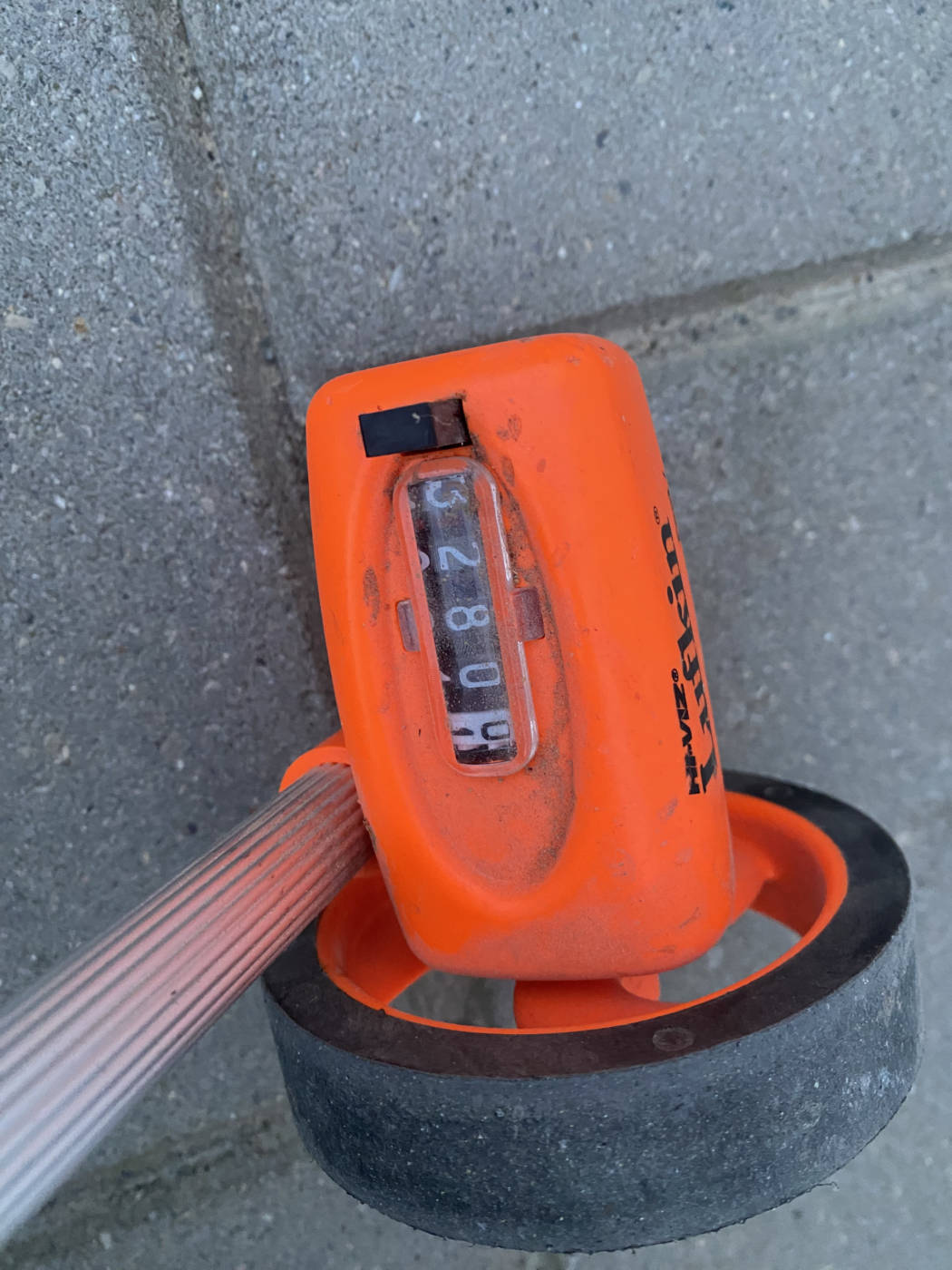

A kilometre can be both such a large and a small measurement, but it was really interesting to see such a tangible small amount of something as an equivalent to such distance. Again, I try to believe in everything in moderation, being balanced is a good way to be healthy and it is important to remind yourself that every kilometre matters, everything you personally are capable of matters, and it can be good to take a step back and focus on the journey you are making, not just the destination.
Marina Abramović
1.
The first genuine feeling I had upon viewing Marina Abramović’s works was that of discomfort. Her use of body, pain, and vulnerability are to a level that is not often shown in media, and it’s all so explicit and bare that it makes you as an audience member feel a sort of pain too. Abramović pushes the limits of what a human body can handle, and does things that even if the average person is technically physically capable, they likely would not have the willpower to put themselves through it, especially in front of an audience. One piece that really stood out causing me discomfort was Rhythm 0. In this piece she stood in front of an audience for 6-hours, gave them 72 objects including items ranging from perfume and grapes to scalpels and scissors and even a loaded gun. She gave the instructions that she was the object, they were free to use the tools on her in any way they desired, and she would take full responsibility for whatever happened. The thought alone of this piece fills me with both fear and awe. She was willing to put her life in the hands of strangers, she gave into various sexual assaults and the very real chance of a potential murder. All her clothes were cut off within 3 hours, and she continued, people were cutting into her skin, hurting her and violating her in so many ways, and she continued, an audience member held the loaded gun to her head, and she continued. Although discomfort was my first impression, almost immediately after that it got combined with pure amazement. Her ability to withstand all of that and yet still stay dedicated to the piece, dedicated to her message, takes so much courage and strength and she is truly a wonderful artist because of that. She wanted to demonstrate the human condition and the length that people will go to if given the opportunity, and she knew she also had to push herself to be able to bring that out from others.
It is clear that one of her goals in all of her works is to cause discomfort for the viewer and that initial impression made me appreciate her work even more. I watched these performances from a very distant point of view, through a documentary on a screen, years after they were initially performed. And yet even with this fact I felt both bothered by the things I was witnessing as well as amazed and truly captured by the performance. Abramović has the ability to build an almost irreplicable connection with the audience, making them feel heavy and intense emotions even from the smaller tasks that feel mundane. After my initial discomfort my next big impression was just true awe of her strength both mental and physical. I truly admire Abramović’s both mental and physical fortitude and everything that she is willing to withstand in the name of her art.
2.
The biggest features of performance art I learned about from Abramović’s work are the importance of honesty and vulnerability and the willingness to give your all to provoke feelings within the audience. Abramović’s quote, “When you perform it is a knife and your blood, when you act it is a fake knife and ketchup.” is so impactful not only to those who want to be performance artists, but truly for any form of artist. A big part of any art is honesty, many artists will say that each piece they create is apart of them they are sharing with the world, and to be willing to share any part of yourself with the world takes a lot of bravery. When acting you can hide behind the fact that it isn’t real, you aren’t showing your true self to be judged, you don’t have to risk anything to get your point across. For performance art to truly be effective you have to give more of yourself than others are willing to give of themselves. Audience’s become so invested and enthralled with Abramović’s works because she is so vulnerable and gives absolutely all of herself to the world. She herself is the object, she herself is the performance, she is not simply a performer and I think that distinction is one of the most important parts of performance art.
Abramović has taught me that performance art must be both structured and fluid, it often has to have a goal and a route put in place to achieve that goal, but the actual way that the performance progresses is very malleable and real. One piece that really makes this clear to me is Relation in Space which she performed with Ulay. In this piece two naked bodies run into each other frontally at increasing speeds for an hour. It’s a piece that makes big commentary on gender and sexism, and really takes a lot of different energies into the work. I think this is such a great piece to explain performance art because although it is structured and has a clear goal and description, the actual outcome becomes dependent on many fluid aspects. As the piece progressed the female body appears to be battered more and more, although both performers often left the performance black and blue, Abramović is seen falling and being more affected as the speed increases. These are very organic collisions and although planned, the way the impact affects each performer is natural and honest and could not be replicated with the same influence if the performers were merely acting. Performance art is about the ‘now’, and you can see this shine through in all of Abramović’s pieces.
3.
Performance art resists many museum and commercial artworld conventions in many ways but especially because it is not something that can be confined to the walls of a museum nor is it something that can be taken with you in any way other than maybe a photograph or a video. The art created has to be very human because it is so focused on the body and the human condition. In ways it allows the audience to feel closer to the piece than they would a painting on a wall, but this does not always work in the arts favour. People often throw criticisms that usually circle around to the question of “Is this even art?” If a piece is being questioned if it’s really art, does it really belong in a museum? This is one of the biggest challenges that Abramović had to face in her career because people constantly questioned her and doubted her each step of the way. Abramović fought and negotiated through these challenges by adding permanent aspects to the innate temporariness of performance art, and she also connected to the audience in such a way that it is almost impossible to deny her work as art. Her exhibit The Artist is Present at the MoMA is a really great example of Abramović adapting because she had performers recreating her own works, she had videos and photos of her old performances displayed as a more permanent aspect, and most importantly she had her performance where she sat without moving everyday for three months straight. I think this piece was so impactful in proving that what she does is art because of how she was able to connect with thousands upon thousands of visitors, create personalised spaces for each of them, and turn herself into almost a semi-permanent piece of art to be admired for hours on end. I don’t think anyone who was able to visit that exhibit could deny that what she did was art and I think this performance was an incredibly smart way for Abramović to prove that she belonged in the commercial art world even if people questioned her work. One of my favourite parts of this piece was that even though she considered other additions, like an illusionist and her fake death, she did not end up including anything else. The piece was that much more impactful because of how raw and truthful it was, because of the stamina, strength, courage and mental fortitude she had to have to carry it out. I feel that all the choices Abramović made really added to her work and truly solidified her work as being more than just actions, but as being real art that can both resist museum conventions and also have a place in the art world.
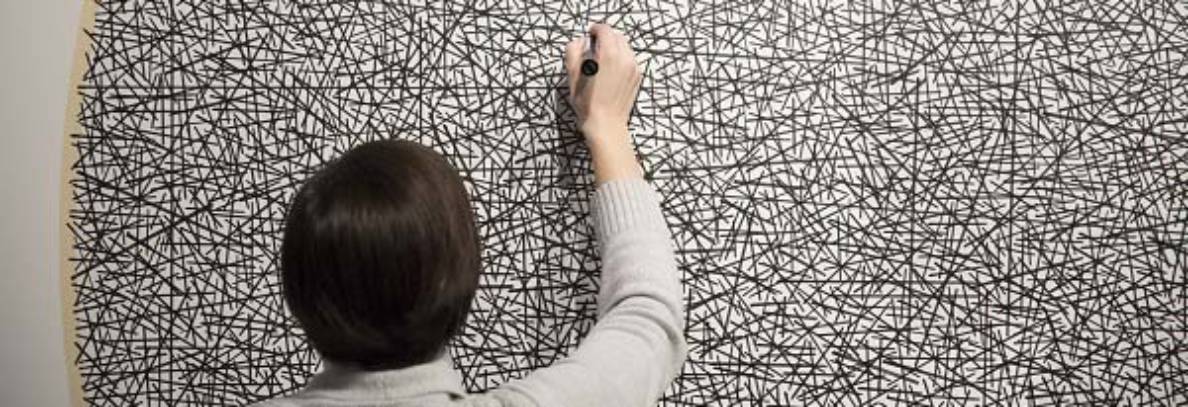
You must be logged in to post a comment.